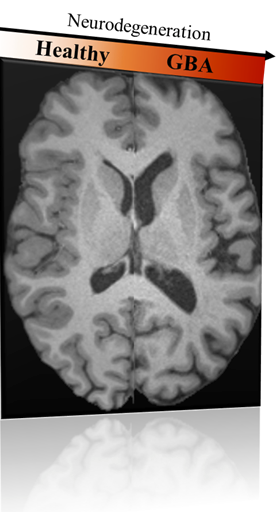Collaborators research

Using C. elegans models to gain insight into the role of glucocerebrocidase in Parkinson’s disease
Jeremy Van Raamsdonk
Projection description: In this work, we will characterize C. elegans models with altered levels of glucocerebrocidase (GBA) to advance our understanding of the role of GBA in Parkinson’s disease (PD). First, we will phenotypically characterize worms with deletion mutations in the four C. elegans gba genes. Second, we will determine the extent to which mutations in gba genes unmask or exacerbate phenotypes in worm models of PD. Finally, we will determine whether overexpression of gba genes is protective in worm models of PD. Overall, this work will generate novel C. elegans models to study GBA and will advance our understanding of the role of GBA in PD.

Shedding light on the Parkinson’s disease Dark Genome
Edward Fon
Over the past two decades, the discovery of dozens of new Parkinson’s Disease (PD) genes has provided a tremendous opportunity to better understand how PD develops. However, the discovery rate of new genes has far outpaced our progress in understanding their roles in PD. Indeed, the research community has focused on a few of the “popular” PD genes (SNCA, PKRN, LRRK2, GBA), while the rest remain understudied. We refer to this set of under-explored genes as the “PD Dark Genome”.
Our hypothesis is that by focusing on the role of lesser-studied PD genes, we will drive a system change in PD research, leading to a better understanding of how PD develops and to the discovery of new targets for therapy.
Our project is to characterize these lesser-studied PD genes in human stem cell-derived differentiated brain cells by systematically investigating them 1) in cellular assays reflecting already known PD pathways such as alpha-synuclein accumulation and phosphorylation, mitochondrial defect and GCase/lysosomal dysfunction, and 2) in discovery genomic assays to uncover new PD mechanisms. These assays will yield biological signature for each profiled gene and determine if they are indeed associated with PD, and if so, understand their role in PD pathogenesis.

Neuropathological and neuroadaptive changes observed in post-mortem brain from individuals bearing GBA1mutations
Martin Parent
Individuals bearing mutations in the GBA1 gene, one of the most important genes in dementia with Lewy bodies and Parkinson’s disease, will be identified from post-mortem human brains stored at the CERVO Brain Research Centre following DNA sequencing. Quantitative immunohistochemical studies will be performed to assess detailed neuropathological and neuroadaptative features. Data will be compared with control brains matched for age, sex, and post-mortem delay. Additional molecular analyses from frozen prefrontal cortex will be performed.

Generating zebrafish GBA1 models of Parkinson’s disease
Gary Armstrong
Zebrafish are a simple vertebrate model with well-developed experimental approaches that can be used for studying diseases affecting the brain including Parkinson’s disease (PD). Brainstem neuronal circuits are conserved between humans and zebrafish allowing for investigations into how dopaminergic neurons degenerate in disease. Furthermore, young fish are transparent permitting us to image dopaminergic neurons in the hindbrain using live-cell imaging approaches. Our laboratory will use the CRISPR/Cas9 gene editing system to generate analogous PD-causing mutations in the zebrafish ortholog of GBA1. These novels models will be useful tools for the broader research community to further our understanding of how mutations in GBA1 drive disease-related degeneration of neurons. Furthermore, zebrafish are excellent models for evaluating therapeutics, as candidate drugs can be added to the water these animals live in.

Development of GBA1 stem cells and translational assays
Thomas Durcan
With a focus on human induced pluripotent stem cells (iPSCs), the Neuro’s Early Drug Discovery Unit (EDDU), led by Dr. Thomas Durcan is at the forefront of modelling the effects of GBA1 mutations with human brain cells and organoid models on a dish. With the workflows and expertise, combined with a unique and ever growing cohort of cell-lines from patients, combined with new emerging lines generated using CRISPR gene editing technology, the group can systematically detect how mutating GBA1 may lead to Parkinson’s. With these cells and workflows, they can systematically generate neurons and other brain cells, that can be directed into a suite of automated imaging, functional profiling and single cell phenotyping assays, all with the goal of better understanding how impacting the GBA1 gene influences lysosomal activity. Not only are they building new models, and developing new assays, they now have made advances exploring how RNA therapeutics could be applied over the next decade as a new therapy for patients with mutations in this gene.

Structural studies of GBA1 variants and interactions
Jean-François Trempe
We will use machine-learning tools such as AlphaFold2 and AlphaMissense to predict the pathogenicity of all reported GBA1 variants of unknown significance. The variants will also be investigated in the context of their predicted effects on interactions with Saposin-C and LIMP2. The outcome of those predictions will be incorporated into the GBA1 browser. Furthermore, we will use nuclear magnetic resonance (NMR) in solution to characterize the interactions of GBA1 (WT and selected variants) with Saposin-C. Those experiments will provide information on how wild-type and mutants of GBA1 interact with its substrate. The thermal stability of those variants will also be assessed in vitro and correlated with pathogenicity predictions. These assays will enable characterization of drug candidates aimed at rescuing pathogenic variant functions.

Investigating the pattern of brain alterations in GBA1 mutations carriers
Alain Dagher, Lydia Chougar
This project aims to investigate the effects of GBA1 mutation on the brain in carriers of GBA1 mutations, using brain multimodal magnetic resonance imaging (MRI). The study population includes carriers of GBA1 mutations, non-manifesting and with PD, as well as patients with sporadic PD and healthy non-carrier individuals. We will analyze brain MRI scans, including T1-weighted imaging to quantify brain atrophy, diffusion imaging to assess microstructural damage, and quantitative susceptibility mapping (QSM) for iron content. We will compare these imaging biomarkers between GBA carriers (non-manifesting and with PD) and those with sporadic PD and with non-carrier individuals, accounting for age, sex and ethnicity effects, as well as disease duration when appropriate, to identify distinctive markers associated with GBA1 mutations. We expect that this research will reveal specific patterns of brain alterations in GBA1 mutation carriers, enhancing our understanding of the mechanisms underlying PD, and contributing to its early diagnosis.




